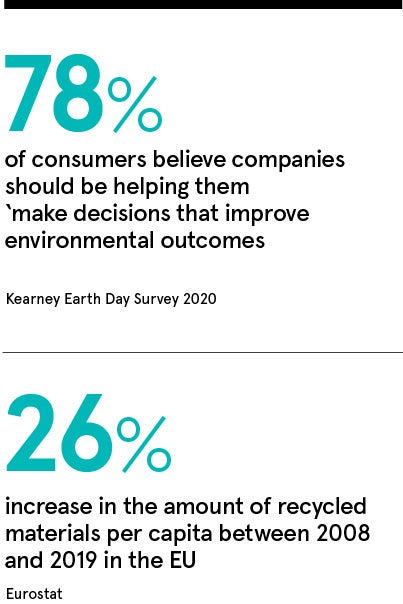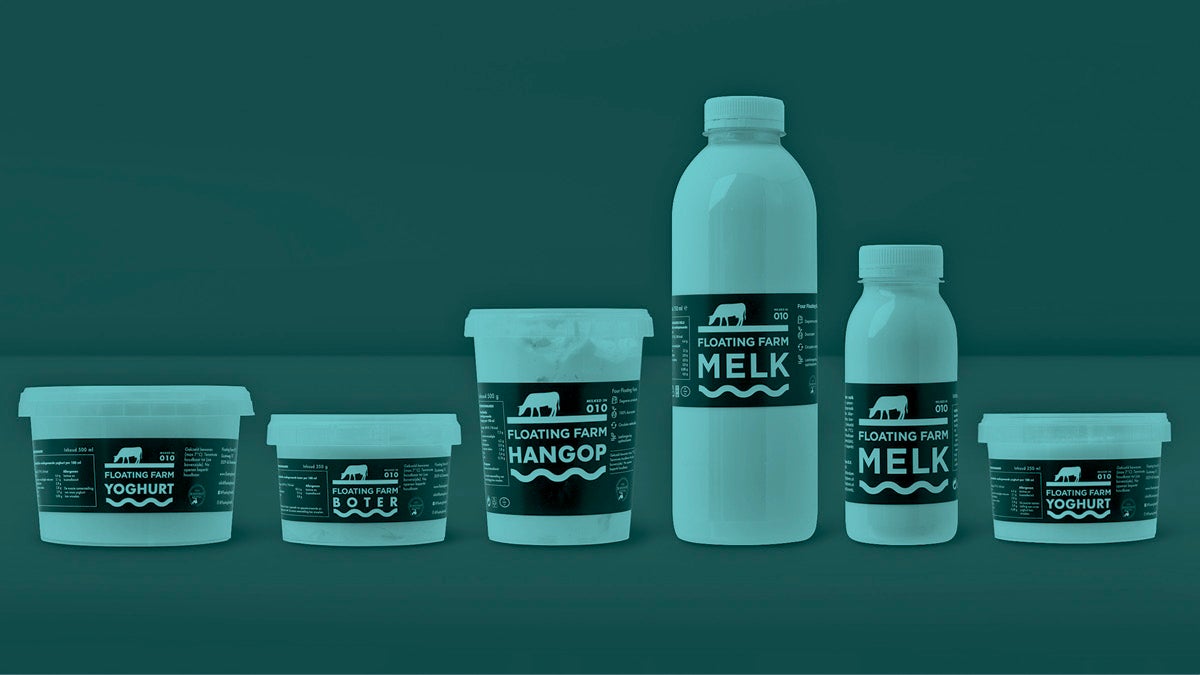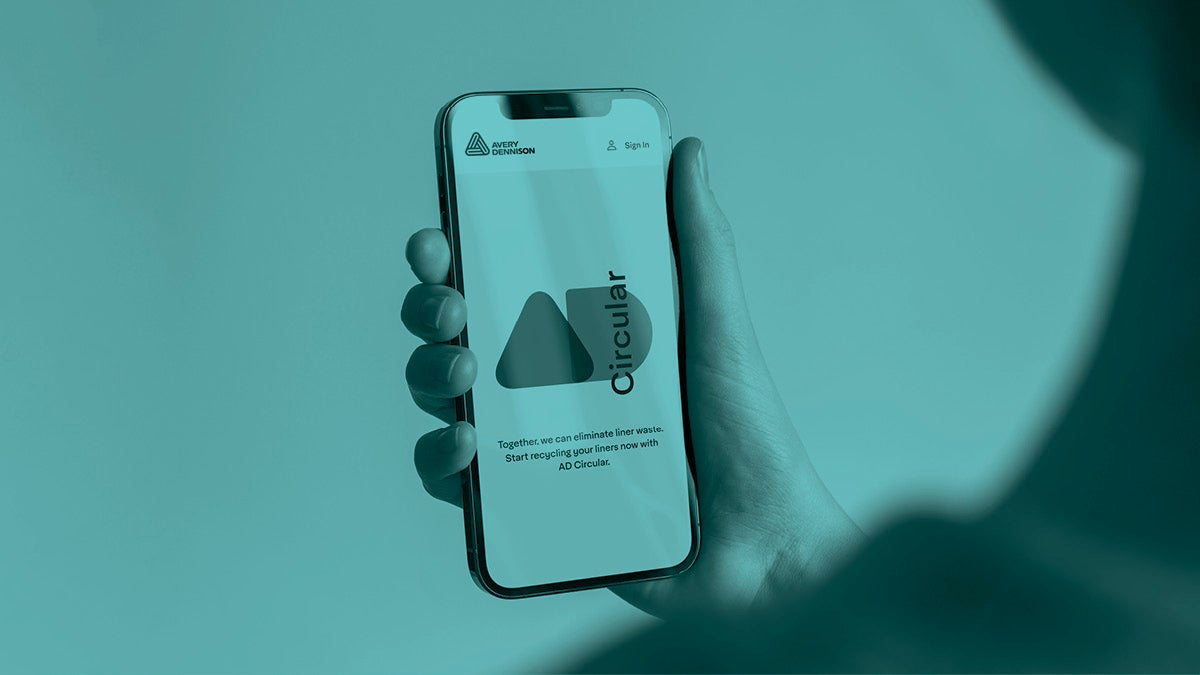
Plastic is one of the most maligned yet miraculously lightweight materials on the planet. The environmental costs of disposing of it improperly have rightly been highlighted in recent years. But without it, it would be hard to keep food fresh or transport liquids home from the shops.
It’s a tricky problem to solve. There is a solution, however: a closed loop circular economy for plastics.
Instead of treating plastic as waste, the circular economy treats it as a valuable resource that can be endlessly recovered, recycled and remade into new products – and not just of the same kind. Polyethylene terephthalate (PET) bottles, for example, can be turned into anything from furniture to carpets. But a lot of work still needs to be done to scale up the circular economy and ensure that plastic no longer pollutes the environment.
Avery Dennison, a Fortune 500 global material science company specialising in labelling, tapes, adhesives, graphics, reflectives, tags, RFID and digital solutions, is meeting this challenge head-on. It is committed to scaling materials that improve the recyclability of consumer goods, increasing the amount of recycled content used in its products, and building a global system for recycling used labelling and packaging materials.
The company’s efforts span three key phases of the plastics lifecycle: design, product life and afterlife. And each of them plays a major role in driving the circular economy for this vital but undervalued material.
Design
Avery Dennison’s labels can be found on millions of shampoo bottles, food containers, boxes and bags. And while these labels may only account for a small proportion of plastic packaging, they make a big difference to how easy it is to recycle.
For example, using adhesives specially formulated for the recycling process enables the proper recycling of millions of food-grade PET packages every year [See ‘Sustainable labels for a floating farm’]. The information on the label – three green arrows in a triangle, or numbers and letters that help recycling teams to identify different materials – also ensures that items are recycled properly. Labels with a high level of recycled content, such as Avery Dennison’s rRange, can make items more sustainable and circular too.
However, there’s often a disconnect between stakeholders in the supply chain. Designers and brand owners, for example, might want to use a yellow, green or fuchsia plastic to maximise a product’s shelf appeal. But this decision could make the item harder to recycle, potentially adding to recyclers’ costs and reducing their yields.
If you look at recyclability, it’s a function of two factors. One is the solutions and systems for recycling. The second is consumer education
“What’s good for the eyes or marketing might not always be useful for recycling,” says Flor Peña Herron, sustainability project manager at Avery Dennison, “so we also need to design according to the whole lifecycle of the product.”
Avery Dennison has developed eco-design guidelines to help brands address this issue. Peña Herron believes it’s also vital that companies talk to their peers, suppliers and customers to find out where more recycled materials could be used and how consumer attitudes are changing.
Take PET bottles, for instance. Although it may take time for consumers to adapt to the idea of ‘different look’ recycled bottles that don’t come in the range of shades available today, she says, as with recycled paper, quality and customer adoption will continue to improve. “Those different looks might disappear, or maybe the public will simply accept them.”
But changing opinions on shelf appeal and recyclability is only part of the solution to the plastic conundrum; you also need to help consumers engage with recycling.
Product life
Designing for recyclability is important, but so is what happens to the product once consumers used it. “There’s a huge effort needed on awareness,” says Hassan Rmaile, vice president and general manager of label and graphic materials for EMENA.
He adds: “So, if you look at recyclability, it’s a function of two factors. One is the solutions and systems for recycling. The second is consumer education. So, even if the label is fully recyclable and the plastic is fully recyclable, if consumers put everything in one trash bag – mixing plastic with glass or paper – you need to put in a lot of effort on the collection side to separate everything mechanically. So for me, the other factor, consumer education, is a very important one.”

Many people aren’t aware that different types of plastic need to be sorted properly during the recycling process. Labels can help to inform consumers what kind of plastic they’re dealing with, and whether it can be recycled or not. However, some packaging features more than one material, or both rigid and flexible plastic, which is harder to recycle efficiently.
Avery Dennison believes mono-material packaging can help to solve this issue. For instance, it recently participated in a project that sought to remove the rigid plastic mouth found on packets of baby wipes. “If you look at the more recent packets, it’s now a flexible ‘tongue’ of plastic. It has a medium-strength adhesive so it sticks enough to close, but it’s not too strong to resist opening,” says Rmaile.
Ensuring that labels are like for like with the item they are attached to – plastic for plastic, paper for paper – also means recyclers don’t need to worry about separating them. “But the challenge with the label is that it’s not just the face, it’s the adhesive too,” says Rmaile. “So, when you say monomaterial, it’s a little more complicated than it sounds. The label needs to have the same material as the bottle, and then the adhesive that’s gluing the face of that label to the bottle also needs to match as well.”
Afterlife
Once plastic leaves a consumer’s home or a business’s premises, it is sorted and separated from other recyclable materials before being baled and transported to specialist plastics recovery facilities. Different types of plastic such as PET, high-density polyethylene (HDPE – the kind used for milk or detergent containers) or polypropylene (PP); different coloured plastics; or the rigid or flexible kind all require different recycling processes,
so mixed bales require further sorting once they reach the plastic
recovery facility.
The plastic also needs to be cleaned to remove any contaminants that might affect the quality of the recycled material. Once the plastic is ground down into flakes, it is washed and sorted again, ready to be melted down and made into new products. But none of this is possible without good plastic collection schemes.
“Even if you have a brand new recycling facility, if plastic isn’t collected properly you won’t have any feedstock,” says Burak Sahbaz, senior director of marketing and sustainability at Avery Dennison. The maturity of these collection programmes tends to vary from country to country, and even municipality to municipality. “Some countries are a little more advanced, while some are still in the early or intermediate phases,” says Sahbaz. “But everything needs to go hand-in-hand.”
He notes that real-world sustainability should always be at the forefront of any recycling scheme. “Imagine that you have a good recycler on one side of Europe, and you’re collecting plastic at the other side,” he says. “Transporting those products to that site might not be sustainable in terms of CO2 emissions.”
Responsibility for reusing and recycling plastic ultimately lies with everyone in the value chain, which is why Avery Dennison is an active member of several industry consortiums – including the Circular Economy for Labels (CELAB), which is dedicated to eliminating label waste. “Collaboration is the key to success,” says Sahbaz. “One company alone can create a spark, but real change comes from society, companies and governments all working together.”
Case Studies
Sustainable labels for a floating farm

As the name suggests, Floating Farm is a literal floating dairy farm in Rotterdam, Netherlands. This innovative company wanted its packaging to align with its ambitious goals for urban food production, animal welfare and the circular economy. But standard polyethylene (PE) labels weren’t removable from their containers, which limited the recyclability of the package and sustainability of their finished product.
To solve the problem, Floating Farm turned to Avery Dennison’s CleanFlake label solution. CleanFlake technology features a switchable adhesive that sticks firmly during the package’s use but ‘turns off’ in the hot caustic bath that’s part of the recycling process.
As a result, the label material separates from the PET flakes and floats cleanly to the surface, leaving no label and adhesive residue in the PET stream. The PET flakes can then be processed into food-grade recycled PET, contributing to a global supply that still lags behind demand.
Tackling the liner waste challenge

Companies in Europe consumed some 470 kilotons of label liners in 2019, yet just over one-third were recycled. AD Circular, a new Avery Dennison program for recycling used paper and filmic label liners in countries across Europe, aims to change that.
Any company with label liners can sign up for the service and arrange a time for the collection of the liners through a simple digital web-based app. Avery Dennison then works with its partners to collect them and ensure they’re properly recycled. It hopes that by 2025, 75% of the label waste it brings to the European market will be recycled in this way.
“Our goal is to create a circular economy that works for everybody,” says Hassan Rmaile, vice president and general manager of label and graphic materials for EMENA. “So even if you’re using other producers’ materials, we’ll collect their liner and ensure it’s recycled properly.”
For more information please visit label.averydennison.com
Promoted by Avery Dennison

Plastic is one of the most maligned yet miraculously lightweight materials on the planet. The environmental costs of disposing of it improperly have rightly been highlighted in recent years. But without it, it would be hard to keep food fresh or transport liquids home from the shops.
It’s a tricky problem to solve. There is a solution, however: a closed loop circular economy for plastics.
Instead of treating plastic as waste, the circular economy treats it as a valuable resource that can be endlessly recovered, recycled and remade into new products – and not just of the same kind. Polyethylene terephthalate (PET) bottles, for example, can be turned into anything from furniture to carpets. But a lot of work still needs to be done to scale up the circular economy and ensure that plastic no longer pollutes the environment.

